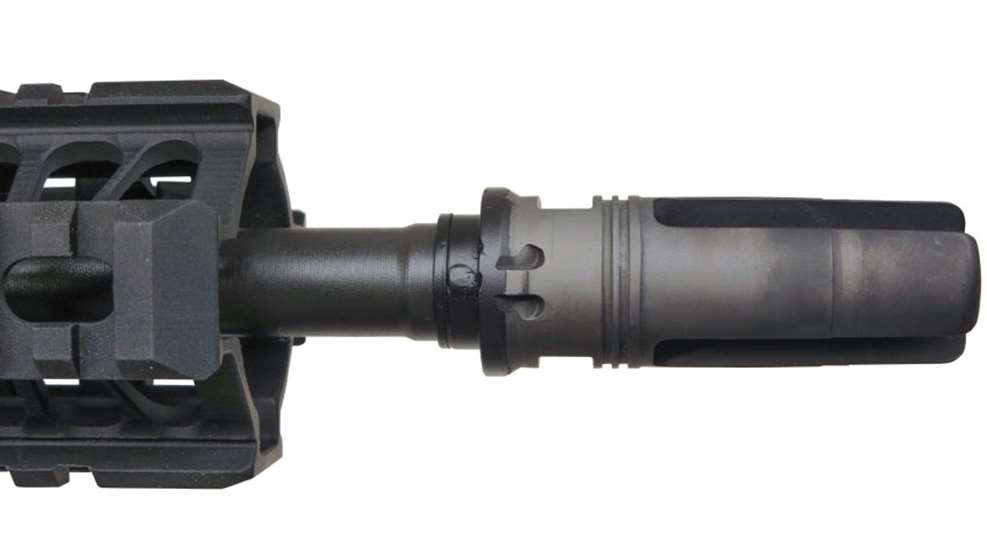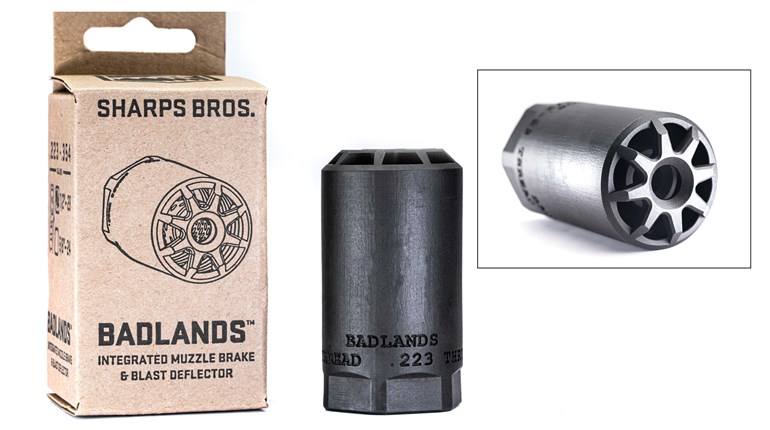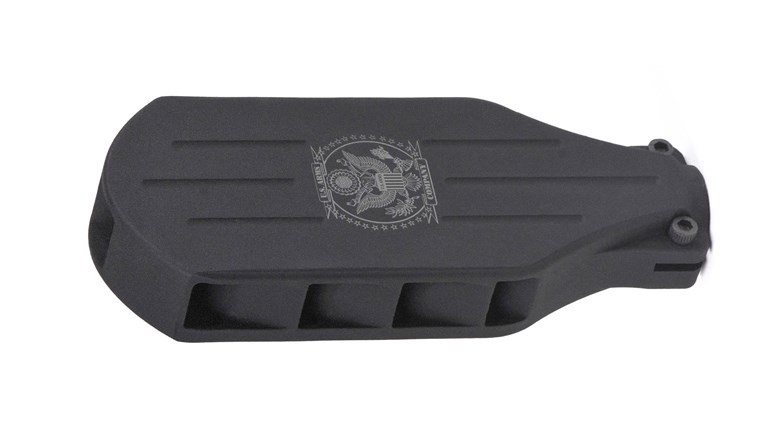
If you’re going to permanently mount a muzzle brake as part of your rifle’s barrel length, choose the device to be attached carefully.
The explosion in sound-suppressor ownership has introduced a whole new generation of firearm owners to the increasingly cumbersome National Firearms Act of 1934 and the different items it regulates. Short Barrel Rifles—or SBRs—are next in line of NFA firearm popularity after suppressors/silencers. While the registration process is very similar for these items, SBR usage is further restricted. The chief difference is that SBRs cannot be taken out of the state in which they are registered without first obtaining written approval (via a Form 5320.20) from the BATFE’s NFA Branch. While it may be possible to obtain blanket one-year approvals for specific locations, this process is anything but convenient, especially for hunters, trainers and anyone else who wishes to travel around the U.S. with a handy carbine in tow.
One alternative to the SBR registration process is to have a muzzle device permanently attached to a rifle’s barrel. This process brings the overall barrel length to at least 16 inches and the overall rifle length to 26 inches or more. Typically we do this with 14- to 14.5-inch barrels, using muzzle brakes, flash hiders or suppressor mounts that are long enough to make legal length. Some shorter barrels can be brought to the 16-inch-minimum length needed by using longer devices, such as the vintage XM177 E2-style flash hiders and compensators made by Del Ton, DPMS and Griffin Armament. Remember to take into account that the typical threaded barrel will seat the device back approximately .6 inches from the muzzle’s face, so the flash hider or brake must be long enough to account for that and still reach at least 16 inches to be exempt from the provisions of NFA oversight.
The National Firearms Act Handbook explains the acceptable methods for barrel measurement and permanent muzzle-device attachment as follows: “…measure from the closed bolt (or breech-face) to the furthermost end of the barrel or permanently attached muzzle device. Permanent methods of attachment include full-fusion gas or electric steel-seam welding, high-temperature (1,100 degrees Fahrenheit) silver soldering, or blind pinning with the pin head welded over. Barrels are measured by inserting a dowel rod into the barrel until the rod stops against the bolt or breech-face. The rod is then marked at the furthermost end of the barrel or permanently attached muzzle device, withdrawn from the barrel, and measured.”
Blind pinning and welding over the pin head is the most popular technique because it is simpler and carries less risk of overheating adjacent metals than do the other methods. While the intrepid hobbyist can do this at home, I recommend letting a gunsmith familiar with the operation do the work. A few extra thousandths of an inch drill depth is all it takes to ruin an otherwise good barrel, so let a pro assume that liability.
This process requires the muzzle device to be drilled through near the rear edge. Several companies pre-drill or dimple their devices to aid the drilling process. Once fully installed on the barrel, the hole must be extended into (but not through) the threaded barrel section, which is where a slight mistake can be costly. The blind hole must be deep enough to seat a steel pin’s tip, holding it captive so that the muzzle device cannot be unscrewed once the operation is complete. Afterward, if someone does try to unscrew the muzzle device, the barrel threads (at a minimum) will be ruined. Additional machining is sometimes needed to dress up the weld and refinishing will help prevent corrosion.
So what is not to like here? For starters, you are pretty much stuck with the muzzle device once it is attached. That means the saw-toothed, Dragon Fire Bore Evacuator that sets fire to adjacent shooting benches is going to be your new best range buddy. Ditto for whatever gas block and fore-end system your gun is set up for. There are exceptions—an experienced gunsmith can carefully cut or mill off a pinned-and-welded muzzle device (or gas block) and replace it, but such work costs money, time and requires a careful touch to do correctly.
I remove and replace pinned-and-welded muzzle devices for customers several times each year and it is neither a pleasant nor a cheap job. Ensure the configuration you choose will serve your needs well into the future before having things permanently attached.
Another option to bring a rifle’s barrel to legal length is to have an actual sound suppressor permanently pinned and welded to it. The firearm would not need a separate tax stamp from BATFE for the shorter barrel in this case, as the integral suppressor would become the additional length needed. You must notify ATF that you have changed the physical characteristics of the suppressor if it is already registered on an ATF Form 1 or Form 4, but at least you do not have to repeat the full registration and tax processes. I am not a big fan of this technique because the suppressor becomes married to one gun only and maintenance/warranty repair become more difficult to do at that point.
Though not without drawbacks, permanently attached muzzle devices allow for compact carbines without the additional cost, hassles and transport restrictions that true SBRs bring along as baggage. If my microcosm of the firearms market is any indication, the popularity of this option will continue to rise.





































